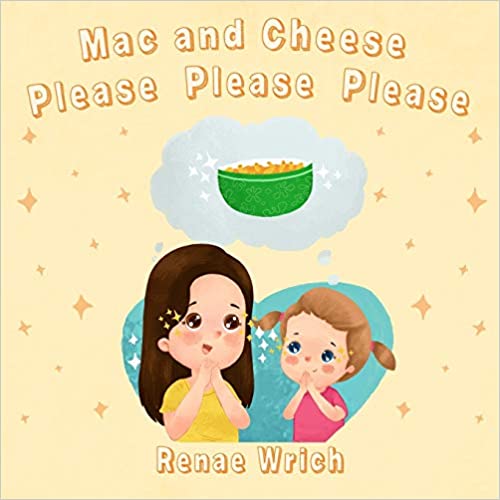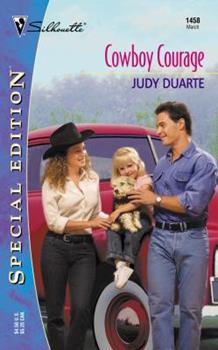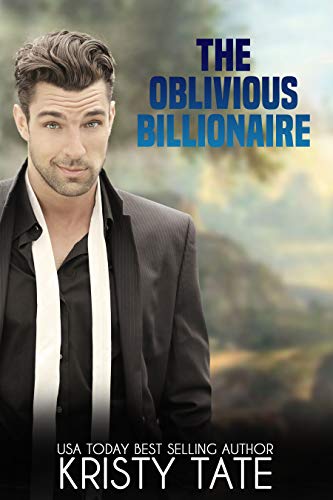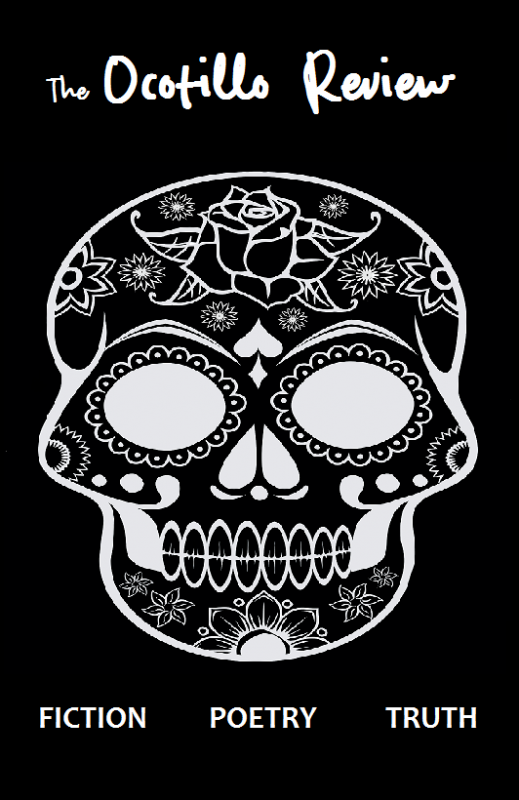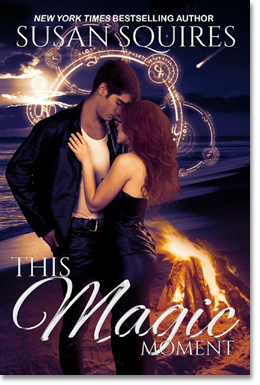Part 2: Things Are Not Fine
January 6, 2006 by A Slice of Orange in category Archives tagged as Craft
A Slice of Orange Blog is pleased to bring you part-two of Susan Squires Blog! For part-one, please scroll down to the preceding blog.
I had a great time during the holidays. I connected with friends and relatives, and I got pretty much just what I wanted for Christmas. Which started me thinking. That would not be a great situation for a novel. We want life to be nice to us, but we can’t be nice to our characters.
Because I’ve been knee-deep in contest entries recently as judging season rolls around, I wanted to talk just a bit about conflict. You may remember recently that I advised taking time to think about what each character wants out of a scene. It’s also important in constructing both your book and your scene to have the reader clear on why that character can’t have what they want.
Yep! Your main character can’t get what they want most, or even whatever they want out of a particular scene, for most of the book. If the scene looks like they do get what they want, there has to be an unforeseen outcome or some kind of a mistake which puts that character right back in conflict. Maybe they got what they thought they wanted, but the reader knows better. If they don’t get what they want, take that opportunity to make not getting it have an even worse consequence. Let’s look at an example. Sally wants to have John ask her to take a ride in his new car. He does. But they get in an accident and are stranded miles from town. Or he does, but the reader knows that he’s secretly a rat who will take advantage of her, and she shouldn’t be going anywhere alone with him. Make it worse—he’s a serial killer! Or he’s a great guy but he doesn’t ask her and worse yet, he asks her arch-rival Ann, instead. And they run over her bicycle which is her only transportation to school. And they laugh at her! You get the idea.
So the question you are asking yourself in each scene is “Does my character get what she wants?†The answer is either, “ Yes, but……†or, “No, and furthermore….†It’s hardly ever just “yes.†Until the last scene! Okay, I only put in “hardly ever†because I’m not a believer in rules. But I do believe that if the main character gets exactly what she wants without her having reservations or without the reader feeling that it was a big mistake, you are letting the story tension seriously lapse. If you do that at the end of the chapter, the reader may close the book and never pick it up again. You leave the reader feeling, “Nice, but so what?†instead of being on pins and needles to see what happens next.
Now let’s talk a little bit about the beginning of a book (remember, I’ve been reading a lot of contest entries, and they’re always about the beginning.) Here, setting the conflict has to come as early as you can manage it. I’ve seen lots of entries where the first pages set the stage, and things are just fine. Uh, oh. Setting the stage can work, but the character has got to have some problem. Okay, she may not have been transported to another universe where she will have to save earth from certain destruction by aliens yet, but she’s got issues! They can be internal conflicts, relationship problems, character flaws, something…. but “things are just fine†doesn’t capture a reader’s interest. Start things off in the middle of “not fine,†and go from there.
Going back to the example I gave of character motivation, what the hero and heroine want is, ideally, in conflict. I used The Companion as an example in my last blog, where Ian and Beth both want to return to the life they once knew. He can’t because he’s a vampire and a normal life is denied him, and her father died, forcing her to abandon her life as an itinerant archeologist. Okay, that means each has conflict between what they want and what they can have. But when we find he wants to return to England where she has always been wildly unhappy and she wants to return to North Africa where he suffered as a slave and has vowed never to return, their goals are in conflict with each other as well. Of course, we know that they are more the same than different. It’s what draws them together. And we suspect that during the course of the story, what they want will change, but the idea is to start them off with things, “not being fine.â€
So, let’s consciously separate ourselves from our characters. I hope the holidays were everything you wanted and expected, and I hope in 2006 you make your characters suffer until the last possible moment!
Part 1: Connections
January 5, 2006 by A Slice of Orange in category Archives tagged as Craft
This time of year is contest judging time. Many contests for unpublished writers come out in the fall, and I’ve been reading and judging lots of contest entries. I’ve noticed some particular problems that have to do with the connective tissue of a story. So, I thought I’d take a moment to talk about connections as they have to do with telling a good story.
We all know about creating nice, complex characters. We all try for an engaging plot line that pulls our reader through a story. But it’s good to understand that those issues come together at the nexus of character motivation.
Motivation is what engages your character with the incidents of the plot and moves your story along. If you are writing a book about the discovery of a cure for vampirism (just as a random example, since that’s what I’m doing right now), how might your various vampire characters feel about that? Does everybody think it’s a good idea? If not, why not? And what would they do about it? Voila! Motivation drives the action. Your characters can change what they want. They can want more than one thing at once, though not all things in the same degree. But you have to make what the characters want very clear to the reader at all times, and not let the motivation “drift.†Drifting just confuses a reader. They lose interest.
So how can you keep your character’s motivation from drifting? When I’m beginning a tale, I start with a statement: “All character X wants is…..†and I try filling in the blank. Dorothy in The Wizard of Oz wants to go home again. Neo wants to know what The Matrix is. When you do this for your hero and heroine, it’s always nice if they want something wildly conflicting. In The Companion, all Beth wants to do is get back to the life she knows in North Africa and avoid England. All Ian wants to do is get back to the life he knows in England and avoid North Africa. That’s what drives the story, and what I had to keep in mind every time they reacted to something that happened, or when they talked together. Their motivations change during the story, but it required showing that change very clearly, and why they change as well.
That’s okay for the big arc of the story, of course, but these connective motivations occur in each scene as well. Every character comes into a scene carrying an invisible suitcase. That baggage includes who they are, what they believe, what they want to happen in this scene and what just happened to them in the last scene. I see many contest entries where the writer seems to lose the thread of what is in the character’s suitcase. What happens in that case is that the scene lacks direction, or the character’s motivation doesn’t seem real. The dialogue feels “off.†We’ve all read stories (published and unpublished!) where this happens. The heroine’s father has just died and she seems to forget that. Or someone goes into an explanatory discourse in the middle of imminent danger. So take a moment to ask yourself before writing a scene, not “What has to happen in this scene?â€, but “What does the character want to happen right now?†“Why?†“How will they feel about what just happened to them in the last scene?†Do this for all the characters, even the minor ones, in your scene. Then write with that in mind. It will help your scene “ring true†both in dialogue and action. By the way, what happened in your scene now gets loaded into the character’s baggage!
When you keep the larger motivational arc in mind, and you pull those characters and their suitcases through each scene, asking what they want and what’s going on in their mind, you are connecting the tissues of your story, and connecting to your reader as well.
Writer’s Life: E.D. Stands for Emotional Depth
January 3, 2006 by A Slice of Orange in category From Our Archives tagged as Craft, humor, romantic comedy, Sandra Paul, writer's Life
Writer’s Life: E.D. Stands for Emotional Depth
By Sandra Paul
I used to lack emotional depth.
Hey, don’t pity me. You probably still do. You just might not know it yet.
After all, I wasn’t aware of my own deficiency until about my fifth book. But when my editor returned my manuscript for revisions there it was, right in the margin next to my dramatic, climatic resolution. Plain as day, my editor had written, Lacks E.D.
Okay, maybe it wasn’t plain as day at first–because I had no idea what, or possibly who, E.D. might be.
So I called my editor to find out.
“E.D. stands for emotional depth,” she told me. “The book needs more of it.”
“C’mon,” I said, trying not whine at the thought of doing more work. “My word count is only 50,000 words. This isn”t War and Peace here.”
“No, it certainly isn’t,” she agreed, much too readily. “But even in a short contemporary romance with, I might add, extra wide margins, the reader needs to come away emotionally satisfied. I don’t even know what your characters are feeling there at the end.”
I honestly didn’t understand how she could say that. I’d written it plain as day (really!) right there on the page. “The heroine feels sad,” I said, quoting directly from the manuscript, “That the hero has found out what she’s done. He feels betrayed and angry.”
“I need more.”
I sighed. “Okay. How ’bout I say she’s very sad and he’s very angry?”
She sighed louder. “I’m not looking for adjectives here,” she replied, very heartlessly. “What I want is to feel something. To feel what your characters are feeling. Go deeper, Sandy. I know you can do it.”
I hung up the phone feeling (in case it isn’t plain as day) very resentful. Easy for her to say. She was just an editor with a stable at the time of over thirty writers, with a slush pile higher than her head next to her desk, who merely spent ten to twelve hours a day editing, writing copy, proofing, and other stuff like that. Obviously, she was much too busy to understand the stress that I, a one-book-a-year (more or less) writer, was under.
Brooding on my editor’s lack of empathy, I went and had a leisurely lunch, then took a three hour nap. When I awoke, I went and did what I should have done in the first place.
I called my critique partners.
“I think it’s fine,” Angie told me after I’d read the last chapter to her five times. “In fact, if anything, there’s too much emotion. I suggest you delete the whole thing.”
She slammed down the phone. Gingerly, I hung up, too. O-kaaay. Apparently I wasn’t the only one dog-paddling in the shallow end of the emotional pool. I then moved on to Barbara J.
“This isn’t just your typical sweet traditional,” Barbara J. informed me. “This is a transformation story about a woman who, after doing something on impulse, learns from that experience to quit being afraid of life. To start going after what she wants.”
I have to admit, I liked the sound of that. But it wasn’t much help for my E.D. problem. So I called Barbara B.
“The universal appeal of this book is that it’s about anyone who’s ever done something stupid, and had to move past it,” she told me. “You need to explore that emotional reaction for the reader. Use the five senses.”
“But I’ve never done what the heroine did. And I never would.”
“No, but you’ve done other stupid things. Use those.”
Totally inspired, I hung up the phone. As usual, Barbara B. was right. I had done stupid thing—lots of them. I’d use the pain and embarrassment I’d lived through to make this book come alive for the reader.
So, after discussing the problem once more with my Artist’s Way group, a dozen people at OCC, and a paunchy, bald guy who happened to be pumping gas at the same time as me at the nearby 7-Eleven, I got down to work.
I thought of all the times I’d humiliated myself and I wrote—and rewrote—until I could smell the heroine’s fear when the hero discovers she’s the one who’d mooned him from the company van. Until I could see the horror on his handsome (yet rugged) face, when he realizes it was her, his trusted secretary (not to mention the woman he’s learned to love) that committed the dreadful deed. I wrote until I could hear the anguish in her soft voice as she struggles to explain, until I could taste their despair as they realize—Mooner and Moonee both—that the memory of what she did will forever be there between them. A big, white blot on their love.
I sank to emotional depths so deep that even those little, jelly-like fluorescent fishes from National Geographic couldn’t survive there. Then I made the hero and heroine both very, very happy when they somehow (cause I don’t want to give the story away here!) manage to overcome all that to live happily ever after.
And when I finally turned the book in—just one month past deadline—I knew I’d done a good job. In fact, my editor told me it was one of the best—if not the best—mooning book she’d ever read.
So, emotional depth? You betcha I’ve got it now.
Step aside, Leo Tolstoy.
Writing for Multiple Lines
December 13, 2005 by A Slice of Orange in category Archives tagged as Craft
It’s great to be back in OCC territory!
My name is Chris Green (writing as Crystal Green for Harlequin Silhouette), and I’m now an out-of-town member who misses coming to the meetings very much. If you haven’t met me, you might not know that I write Silhouette Special Editions and Bombshells, Harlequin Blazes, plus single title vampire books for Berkley. Yes, just a few different genres and romance sub-genres—and that’s what I’m blogging about today.
Writing for multiple lines.
There are a lot of authors out there who believe that writing in such an unfocused manner is a negative, and I absolutely understand their reasoning. “Branding†(making your name an easily identifiable product) is important to sales, and spreading out your “brand†(or what the audience expects from the author) only serves to hurt you in the long run. I can tell you firsthand that this is a scary situation for me because, oftentimes, a reader doesn’t know what kind of story I’ll be giving them from one month to another. They can’t depend on a definite “comfort read†from me. It makes Crystal Green, as a product, hard to pin down.
But my creative side loves that.
True, writing different types of stories is a business risk, but in my case, sticking to one thing is a quick road to burn out. First, I have eclectic tastes anyway—for instance, I read three books at a time and they’re all from different genres. This is obviously reflected in my writing: I love challenge and variety (Key words, here!). Second, I know that if I created stories for just one line, I wouldn’t be able to write as much as I do now. This past year, I had six original releases (that number isn’t including two reissues). Next year, I’ll have about four, but that’s because these single-title fantasy Berkley Vampire Underground books take much more time (as do Bombshells). In order to keep up this pace, I need constant challenge and variety. Let me explain further: my “home line†(where I made my first sale) is Special Edition; these books are known for their “home-and-hearth/community†qualities and the stories speak to the innocent side of me that loves a good happy ending. Blaze stories, which are “hot and steamy†romances, give me the chance to get a little wild. Bombshells feature more complex plots and they allow me to get a lot darker (I’ve written a vampire book—THE HUNTRESS—as well as a murder mystery that’ll be released in fall, 2006.). And then there are the Berkley Vampire Underground books…. These combine emotion, steaminess, mystery, adventure, and fantasy, so they’re a stew of everything else I write. So, you see, I’m getting plenty of that challenge and variety.
Third, and this is maybe the most important item for me, when I think of a story idea, it doesn’t always fit into a certain line. I go with what excites me, and that can be just about anything. When I thought of the concept for THE HUNTRESS, I was writing for Special Edition and Blaze. Sure, I was wary about taking on another line, but, daggonit, I really wanted to do this book. Branding was the last thing that would soothe the creative monster in me, so I went for it. And you know what? That decision is redefining my career—it led to my three-book deal with Berkley and is taking me in different directions daily.
Business versus creativity—that’s my biggest struggle right now. But everyone has to deal with it, and you have to come up with your own solutions. What’s the right decision for you? How is each story idea going to affect your career and/or your well-being?
I hope this gives you something to chew on. Happy Holidays and all the best. : )
THE HUNTRESS has been re-released this month as TWICE BITTEN, a vampire story collection that also contains Erica Orloff’s URBAN LEGEND. You’ll find PAST IMPERFECT, Crystal’s next Special Edition, on shelves this month, too. Additionally, stay tuned for a release date for the first Vampire Underground book from Berkley.
To keep current with Chris/Crystal, visit her Web site at www.crystal-green.com, where there’s a great contest going on right now….
Techniques for Punching Up a Sagging Middle
December 8, 2005 by A Slice of Orange in category Archives tagged as Craft
By Jackie Hyman w/a Jacqueline Diamond
I’ve been thinking about sagging middles, probably because of eating too much holiday food. Well, never mind my pathetic waistline. We’re talking about books.
I HATE sagging middles. When I write. And when I read.
What’s a sagging middle? Picture this: You create a dynamite situation, building to a killer climax. In your mind and your synopsis, it’s a can’t-miss storyline.
Now comes the hard part: writing. You blast through fifty, seventy-five, maybe even a hundred-some-odd pages. Suddenly, you stop.
Look at all the rest of the pages you gotta fill before the climax. Scary.
It saddens me when authors let the tension drop at this point, regardless of whether they’re writing suspense or strictly relationship novels. The characters mill around, have way too much sex (unless you’re writing erotica), talk things over repetitively, and worry.
Potentially interesting incidents may occur, but they’re episodic, springing out of nowhere and leading nowhere. Where’s the momentum? By the time that exciting and/or heart-tugging climax comes around, the tedium has claimed half your readers.
The good part is that, in the course of writing 80-plus novels and novellas, I’ve learned steps you can take to strengthen that sagging middle and make it fun.
Here’s what I do:
#1. Reread what I’ve written. Pick up the emotional thread.
#2. Reread my notes and bio sketches. Jot down lists of backstory and traits to include, and points to make.
#3. Look at the proposed climax and figure out what needs to happen to get there.
#4. Examine the proposed character arcs, and make sure they’re strong enough..
#5. Review the main relationship and conflict.
THEN:
I develop a subplot or subplots that interweave all of these issues with the main plot. Ideally, the subplot (s) create an interaction between the external action and the characters’ internal development.
EXAMPLE
In Nine-Month Surprise (February), the second book in my Downhome Doctors miniseries for Harlequin American, the main storyline concerns the heroine getting pregnant by a man she met on an out-of-town trip, a guy who abandoned her while she slept. Then he turns up as her town’s new obstetrician, divorced with 6-year-old twin daughters who enter her first-grade class.
So they’re thrown together. She’s teaching his kids – and she’s pregnant by him! Naturally, I created reasons for his emotional withdrawal and her emotional neediness. When they start to resolve their issues, there’s additional conflict because she’s determined to leave Downhome and take her dream job in Seattle..
BUT I don’t write pages and pages of sex – I need other interesting things to happen! And I preferred for them to involve his position as the town’s obstetrician.
In reviewing my notes, I spotted some interesting secondary characters who were important in their lives. That’s when I got a subplot idea.
The heroine’s fortysomething aunt, a widow with a grown son, gets pregnant too, by a guy who thinks he’s in love with someone else. This infuriates her son, a police lieutenant. Before he can start shooting, the obstetrician gets dragged in as mediator, with the heroine’s help.
One more trick: I make sure that each scene sets up the next scene, so the story never stops dead. Little plot reversals, surprises, bits of suspense keep building to the turning points, which is when we get major reversals and kick the plot into a higher gear.
What I did with Nine-Month Surprise is NOT the kind of stuff that keeps my mystery/intrigue novels pumping. No dead bodies, no threats, no bumps in the night. But in a category romance, subplots should spark enough interest to keep the reader absorbed.
So if your book’s middle is sagging, look for storylines that will deepen and extend the main conflict and expand on the characters. Also, don’t forget to build expectations and then twist the story so the reader gets a pleasant surprise.
The best part is, the writing goes faster when there’s forward momentum. Because I can’t wait to find out what happens, too!
www.jacquelinediamond.com
author of the Downhome Doctors miniseries from Harlequin American Romance
December ’05: The Police Chief’s Lady, ISBN 0-373-75098-6
February ’06: Nine-Month Surprise, ISBN 0-373-75105-2
April ’06: A Family at Last, ISBN 0-373-75113-3
June ’06: Dad by Default, ISBN 0-373-75122-2
August ’06 (tentative): TBA
Affiliate Links
A Slice of Orange is an affiliate with some of the booksellers listed on this website, including Barnes & Nobel, Books A Million, iBooks, Kobo, and Smashwords. This means A Slice of Orange may earn a small advertising fee from sales made through the links used on this website. There are reminders of these affiliate links on the pages for individual books.
Search A Slice of Orange
Find a Column
Archives
Featured Books
MAC AND CHEESE, PLEASE, PLEASE, PLEASE
They liked macaroni and cheese SO much, if they could, they would eat it for breakfast, dinner, and lunch!
More info →THE OBLIVIOUS BILLIONAIRE
How can you know where you're going if you can't remember where you've been?
More info →THIS MAGIC MOMENT
She knows in her blood and in her bones that her Destiny is a member of the Clan. She must reject him as an enemy. But can she?
More info →Newsletter
Contributing Authors
Search A Slice of Orange
Find a Column
Archives
Authors in the Bookstore
- A. E. Decker
- A. J. Scudiere
- A.J. Sidransky
- Abby Collette
- Alanna Lucus
- Albert Marrin
- Alice Duncan
- Alina K. Field
- Alison Green Myers
- Andi Lawrencovna
- Andrew C Raiford
- Angela Pryce
- Aviva Vaughn
- Barbara Ankrum
- Bethlehem Writers Group, LLC
- Carol L. Wright
- Celeste Barclay
- Christina Alexandra
- Christopher D. Ochs
- Claire Davon
- Claire Naden
- Courtnee Turner Hoyle
- Courtney Annicchiarico
- D. Lieber
- Daniel V. Meier Jr.
- Debra Dixon
- Debra H. Goldstein
- Debra Holland
- Dee Ann Palmer
- Denise M. Colby
- Diane Benefiel
- Diane Sismour
- Dianna Sinovic
- DT Krippene
- E.B. Dawson
- Emilie Dallaire
- Emily Brightwell
- Emily PW Murphy
- Fae Rowen
- Faith L. Justice
- Frances Amati
- Geralyn Corcillo
- Glynnis Campbell
- Greg Jolley
- H. O. Charles
- Jaclyn Roché
- Jacqueline Diamond
- Janet Lynn and Will Zeilinger
- Jaya Mehta
- Jeannine Atkins
- Jeff Baird
- Jenna Barwin
- Jenne Kern
- Jennifer D. Bokal
- Jennifer Lyon
- Jerome W. McFadden
- Jill Piscitello
- Jina Bacarr
- Jo A. Hiestand
- Jodi Bogert
- Jolina Petersheim
- Jonathan Maberry
- Joy Allyson
- Judy Duarte
- Justin Murphy
- Justine Davis
- Kat Martin
- Kidd Wadsworth
- Kitty Bucholtz
- Kristy Tate
- Larry Deibert
- Larry Hamilton
- Laura Drake
- Laurie Stevens
- Leslie Knowles
- Li-Ying Lundquist
- Linda Carroll-Bradd
- Linda Lappin
- Linda McLaughlin
- Linda O. Johnston
- Lisa Preston
- Lolo Paige
- Loran Holt
- Lynette M. Burrows
- Lyssa Kay Adams
- Madeline Ash
- Margarita Engle
- Marguerite Quantaine
- Marianne H. Donley
- Mary Castillo
- Maureen Klovers
- Megan Haskell
- Melanie Waterbury
- Melisa Rivero
- Melissa Chambers
- Melodie Winawer
- Meriam Wilhelm
- Mikel J. Wilson
- Mindy Neff
- Monica McCabe
- Nancy Brashear
- Neetu Malik
- Nikki Prince
- Once Upon Anthologies
- Paula Gail Benson
- Penny Reid
- Peter J Barbour
- Priscilla Oliveras
- R. H. Kohno
- Rachel Hailey
- Ralph Hieb
- Ramcy Diek
- Ransom Stephens
- Rebecca Forster
- Renae Wrich
- Roxy Matthews
- Ryder Hunte Clancy
- Sally Paradysz
- Sheila Colón-Bagley
- Simone de Muñoz
- Sophie Barnes
- Susan Kaye Quinn
- Susan Lynn Meyer
- Susan Squires
- T. D. Fox
- Tara C. Allred
- Tara Lain
- Tari Lynn Jewett
- Terri Osburn
- Tracy Reed
- Vera Jane Cook
- Vicki Crum
- Writing Something Romantic
Affiliate Links
A Slice of Orange is an affiliate with some of the booksellers listed on this website, including Barnes & Nobel, Books A Million, iBooks, Kobo, and Smashwords. This means A Slice of Orange may earn a small advertising fee from sales made through the links used on this website. There are reminders of these affiliate links on the pages for individual books.


